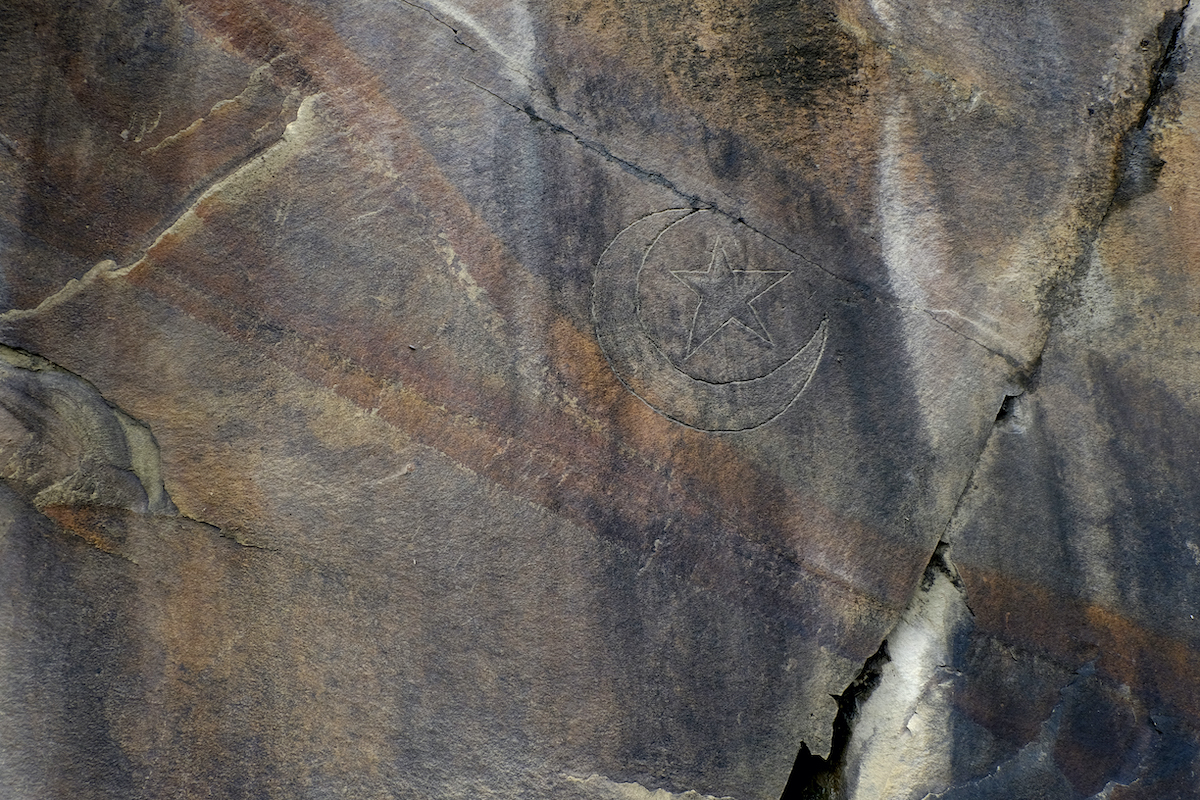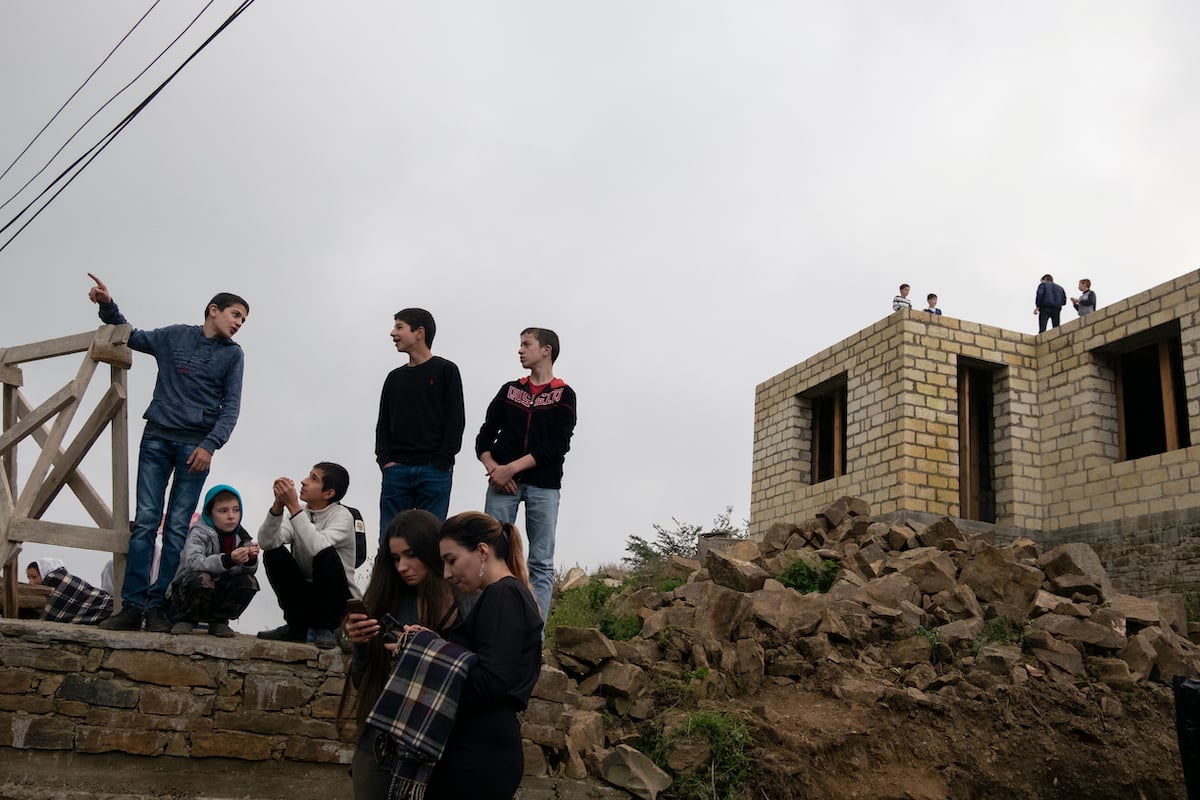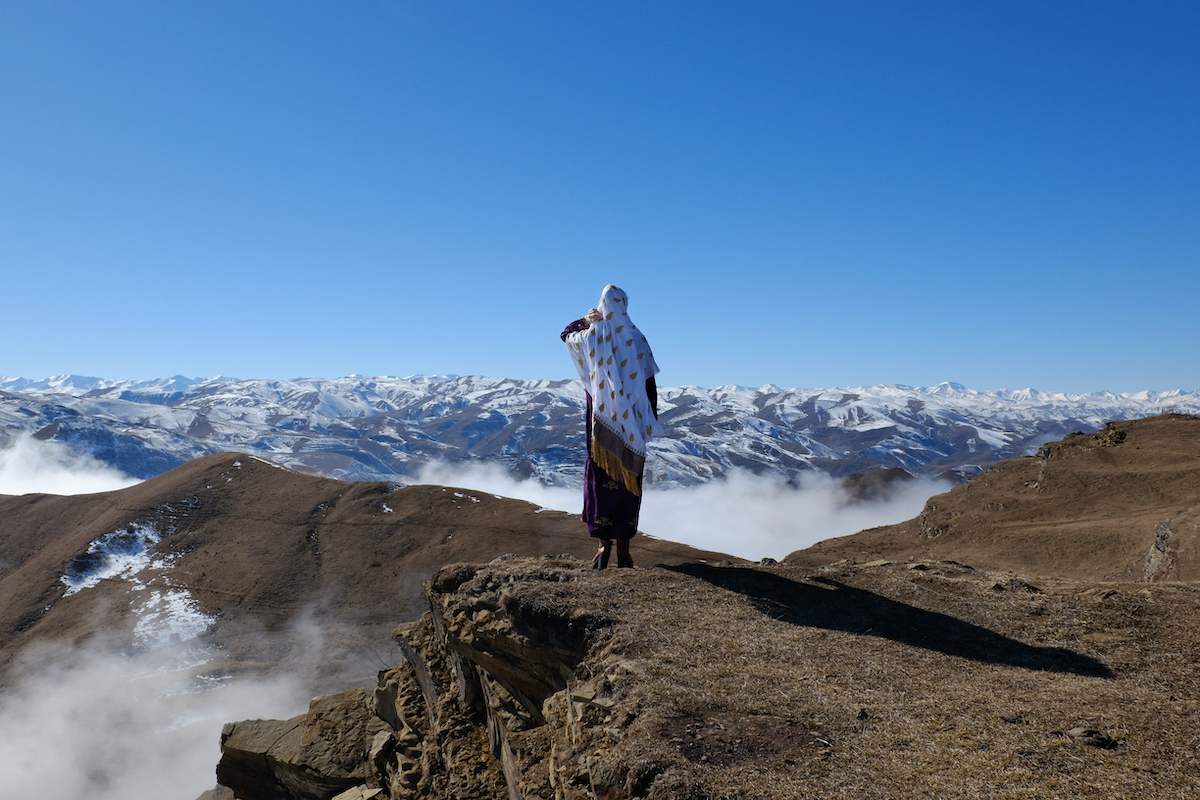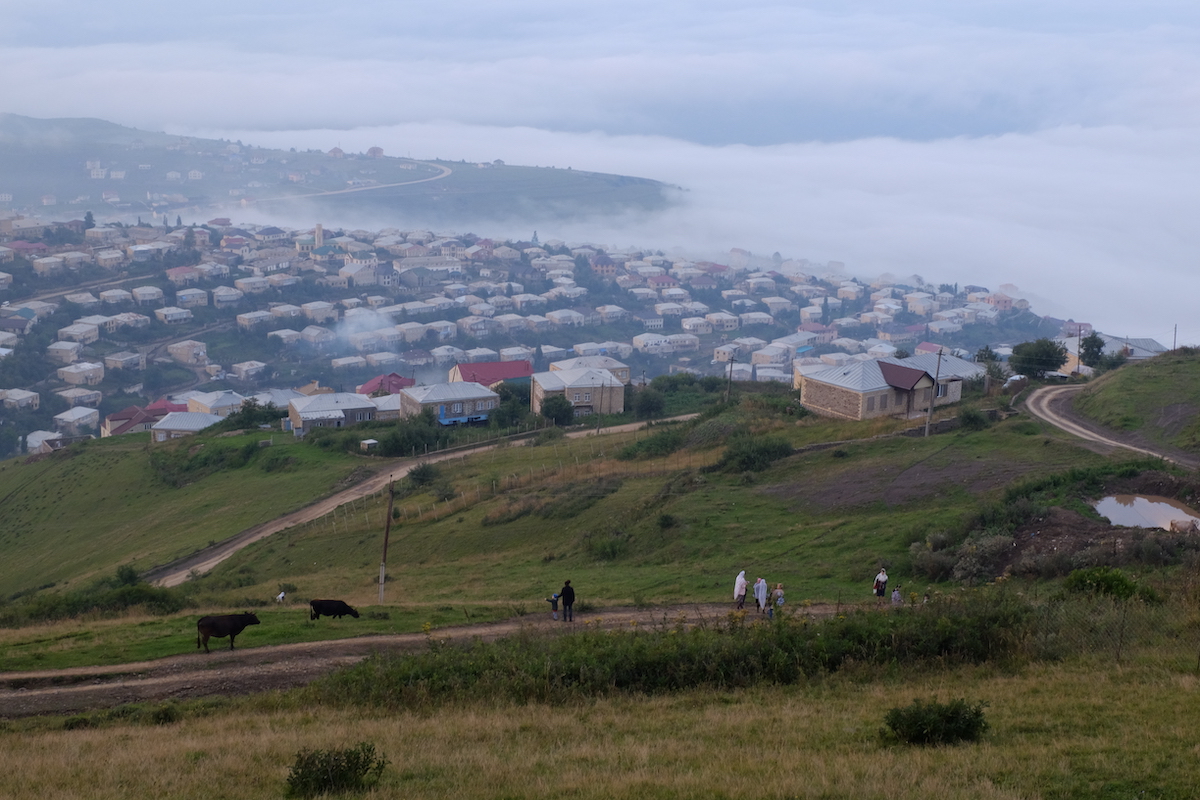Feast in the clouds: capturing a season of eternal weddings in a Dagestani village
The village of Kubachi is celebrated for its delicate craftsmanship, but family life is dominated by a frantic and joyous wedding season
Home to more than 30 nationalities scattered among the Caucasian mountains, the Russian republic of Dagestan is like a country within a country. The region’s rich cultural diversity drew in Anna Bernal, a St Petersburg-based photographer who made several trips to the Dagestani town of Kubachi. She documented life in this village of traditional jewellers, as the changing seasons saw Kubachi transform from a town hosting endless weddings in the summer, to a sleepy white-cloaked enclave in winter. “At that time, clouds settle on the streets and you literally walk through them,” she remembers.


It takes around five hours to get to Kubachi from the Dagestani capital of Makhachkala on the Caspian Sea. Green, flower-coated hills disappear into thick fog as the bus winds skywards, yellow gas pipes winding their way up to isolated villages along with the road. In Dagestan, people historically settled amid the impenetrable mountains, which defines the patchwork nature of the territory: neighbouring villages often speak different languages and follow their own traditions despite being relatively close geographically. “Separated by the mountains, each village has its own customs and crafts. There are villages of potters, blacksmiths, weavers, and jewellers,” Bernal comments.
These crafts and antiquities are cherished by Dagestanis. “In almost every home, there is a museum-like room with antiques and family relics: old spinning wheels, decorated plates, houseware,” Bernal remembers. A pear-shaped copper water pot called a muchal and a kaz gold-embroidered scarf are among the signature items made by Kubachi artisans.




The village, however, has been defined by jewellery making and armourers for centuries. Legend has it that Alexander the Great had his helmet made in Kubachi. Kubachin daggers, sabers, scimitars, chainmail, and a variety of jewelry is kept in the world’s best museums, among them the Victoria and Albert Museum in London, the Louvre in Paris, and the Hermitage in St Petersburg. In the Soviet era, there was an art factory here. Today, every second house in Kubachi has a workshop where local craftsmen keep the tradition alive.
But when Bernal came to Kubachi, she was also determined to explore lesser-known sides of village life, and agreed to return in the summer, when the Kubachins from all over Russia return to see their families. Locals had told Bernal that some weddings would be taking place, something which turned out to be a near non-stop celebration. In fact, the number of events is so overwhelming that the local newspaper publishes a wedding timetable on its website. “In August, pretty much everyone is busy with a wedding here — their own, a neighbour’s, or a relative’s.” Naturally, I was invited everywhere.”




The unspoken rule requires that all weddings should take place in the summer, although some rare exceptions sometimes take place. Kubachins often come back to their home village for the celebration to find a fiancé for a younger son or brother.
Yet despite their thriving traditions, more and more ancient settlements in Dagestan are abandoned. While Kubachi celebrated, its neighbours in the village of Amuzgy — walking distance from Kubachi — were hit by a devastating blow: the village’s last elderly resident passed away.